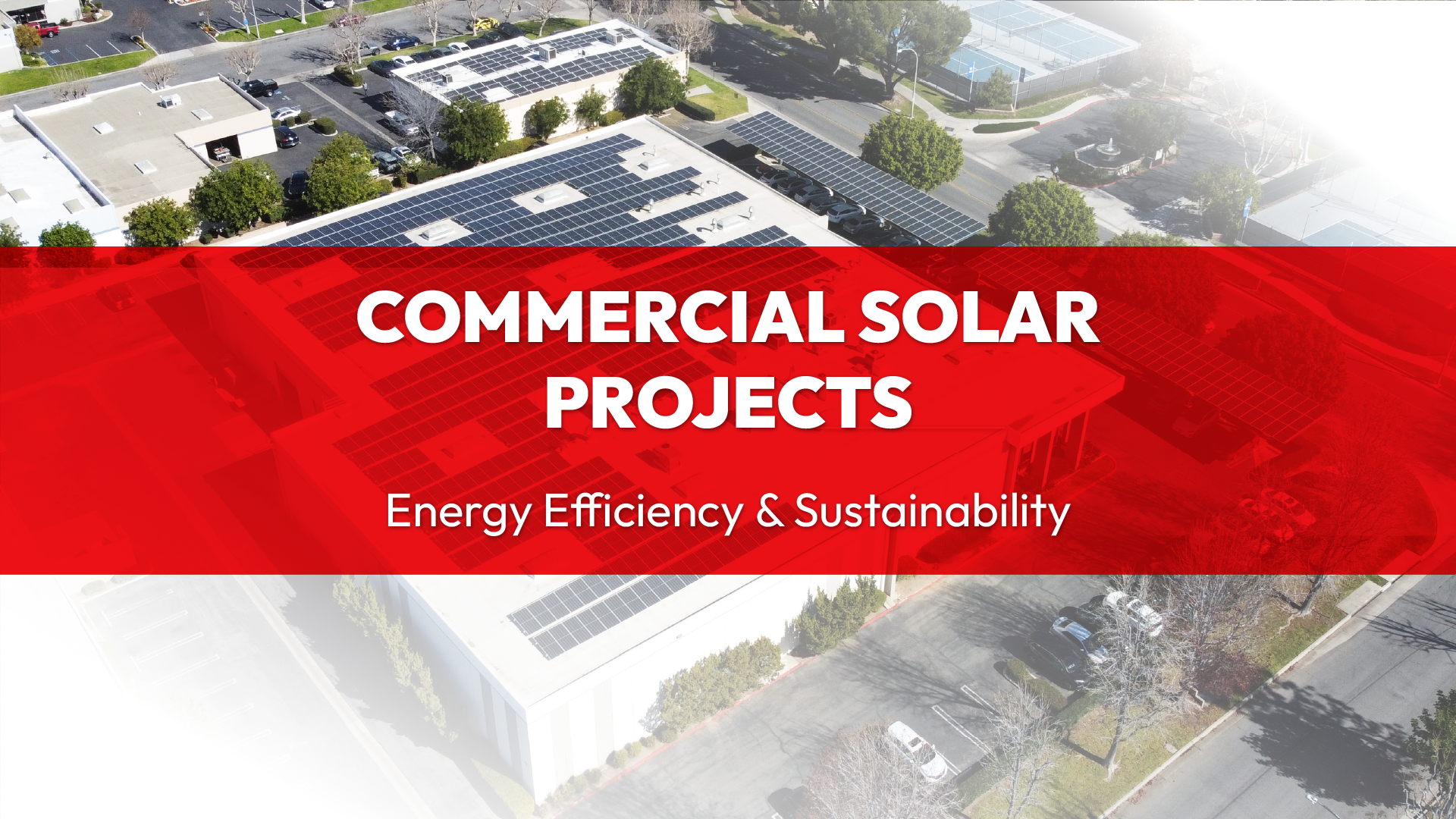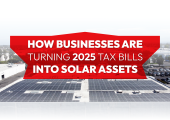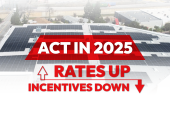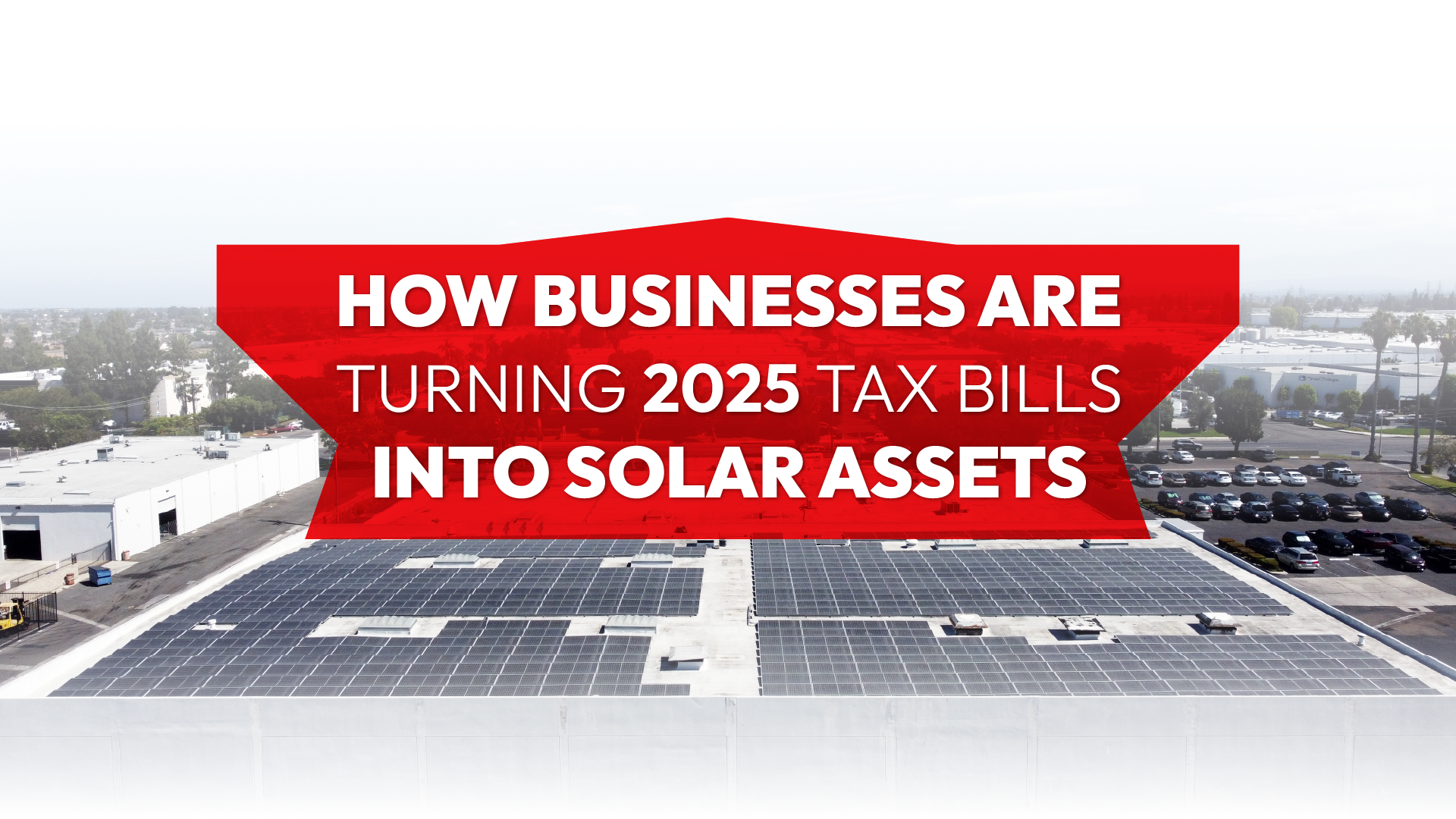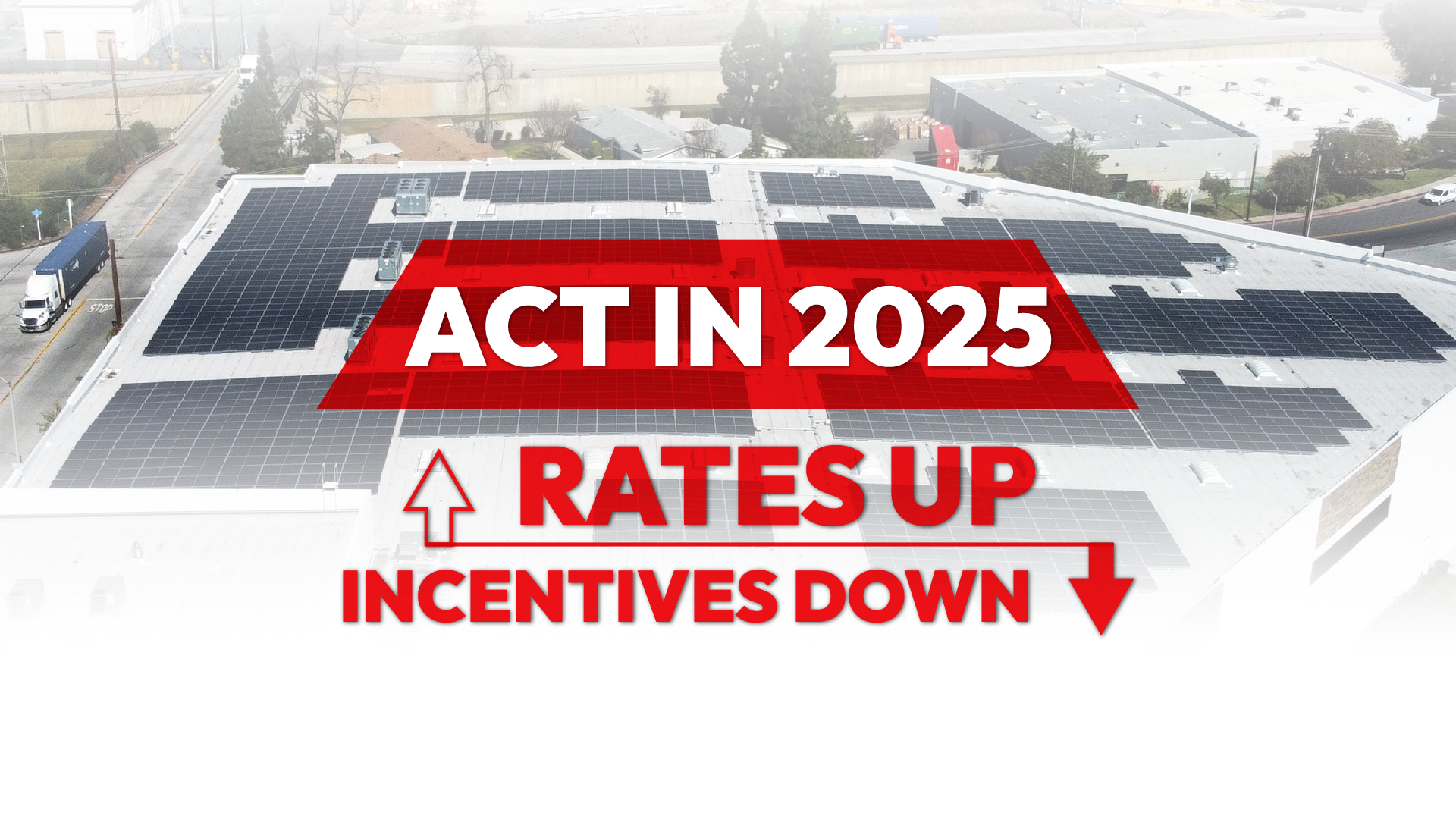How much is your business spending on energy, and what if solar could cut those costs in half?
Across the United States, commercial solar projects are enabling companies to slash utility costs, stabilize operations, and achieve long-term energy independence. From rooftop solar systems to utility-scale facilities, commercial solar development is no longer just about going green—it’s about smart business.
In this article, we explore the full landscape of commercial solar development: from technologies and tax credits to permitting, storage innovations, and corporate adoption.
What Are Commercial Solar Projects?
Commercial solar projects are large-scale solar energy systems designed to meet the high electricity demands of businesses, industrial facilities, agricultural operations, and public entities. These systems can be installed on rooftops, ground-mounted on open land, integrated into parking canopies, or developed as off-site utility-scale projects.
Unlike residential solar panels, commercial systems are engineered for scale, reliability, and strong return on investment—often involving solar tracking systems, battery storage, and energy monitoring tools. These setups convert sunlight into electricity using solar panels, solar cells, and solar inverters. That electricity can then be used onsite, stored in lithium-ion batteries, or fed into the grid to offset energy costs.
Why Businesses Are Choosing Solar Energy
Businesses across the U.S. are adopting solar energy as a strategic financial move, as commercial solar projects offer a compelling blend of cost savings, tax advantages, operational resilience, and environmental impact reduction. Here are the key reasons:
1. Reduced Utility Costs and Operational Expenses
Commercial solar installations enable companies to offset high utility bills and earn credits via grid-tied systems. Although only about 3.5% of U.S. commercial buildings currently have solar systems installed – that only highlights significant room for expansion in efficiency and cost reduction.
2. Access to Lucrative Incentives
Thanks to supportive federal policies, businesses have access to major financial incentives:
- Federal Investment Tax Credit (ITC) – Currently allows businesses to deduct a substantial percentage of solar system installation costs from federal taxes.
- Accelerated Depreciation (MACRS) – Lets companies recoup costs faster by depreciating the solar equipment.
- State-Level Incentive Programs – Vary by location but may include grants, rebates, and performance-based incentives.
Tools like a solar payback calculator can help property owners visualize savings over time, making solar an appealing investment.
3. Meeting Environmental and ESG Goals
Environmental sustainability is no longer a bonus—it’s a business imperative. With renewables accounting for only 9% of U.S. primary energy consumption in 2023, ramping up commercial solar helps businesses contribute to carbon reduction and ESG pledges
4. Energy Resilience and Self-Sufficiency
When paired with lithium-ion battery storage or other energy storage systems, commercial solar installations can provide consistent energy access—even during grid failures or peak pricing events. In a sector consuming, on average, 22.5 kWh/sq ft per year, solar + storage can significantly reduce both energy costs and vulnerability
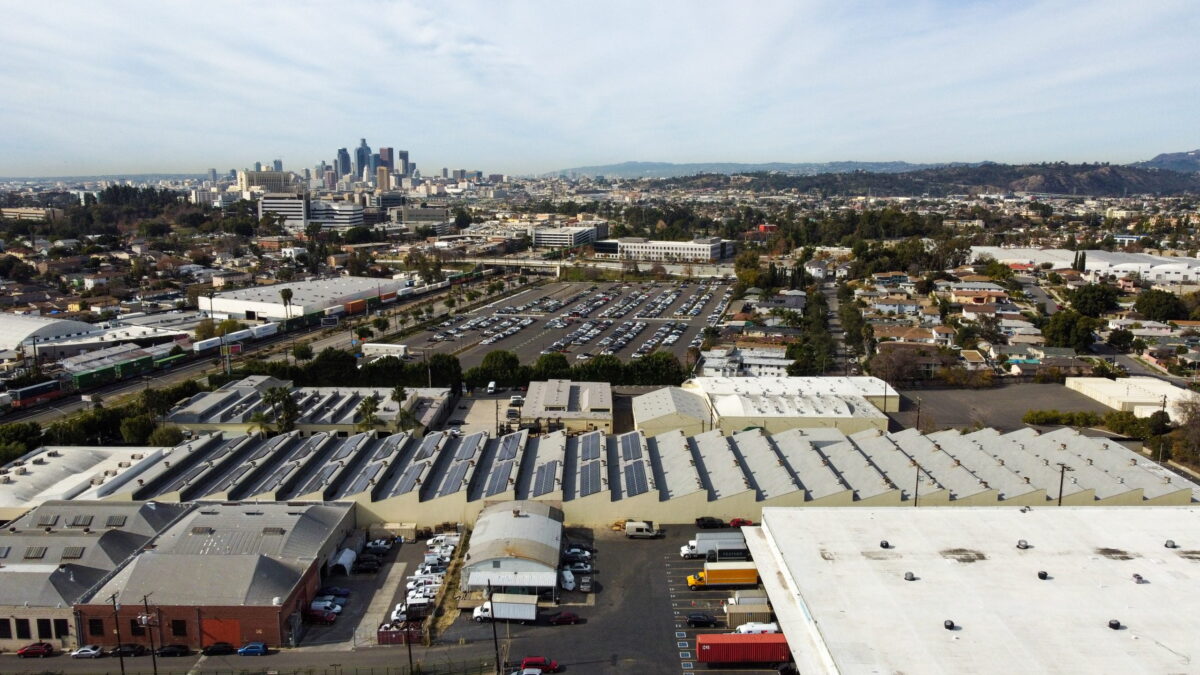
The Commercial Solar Installation Process
Now that we’ve got a better understanding of why commercial solar is a smart move, let’s explore how these projects actually come to life.
1. Site Selection and Solar Proposal
The first step is determining whether your location is viable for solar. Factors like sunlight exposure, available roof or land space, local zoning laws, and proximity to the utility grid all play a role. This is where working with an experienced solar consultant becomes essential.
At this stage, the consultant will:
- Assess your property’s solar potential
- Analyze your energy usage patterns
- Forecast future energy demand using demand forecasting tools
- Propose a custom solar energy system based on system size, layout, and desired outputs.
This initial analysis helps generate a detailed solar proposal, which includes estimated production, cost of installation, ROI, and available incentives.
2. Engineering and Design
Once approved, your system is engineered to fit your specific site. This includes:
- Electrical and structural designs
- Selection of solar technologies (e.g., commercial-grade solar panels, tracking mechanisms, or solar power storage options)
- Integration of solar inverters, battery storage, and monitoring systems.
Engineers also take into account your industry needs. For instance, agricultural and commercial solar installations often require rugged, scalable setups, while industrial solar systems may prioritize redundancy and automation.
3. Environmental Permitting and Compliance
Before installation begins, the project must meet all applicable regulatory and environmental standards. This phase includes:
- Securing building permits
- Completing environmental due diligence
- Working with environmental consultants to address any environmental concerns (e.g., water runoff, endangered species, or community impact)
- Navigating environmental permitting processes, especially for utility-scale projects.
In some areas, permitting may involve coordination with both local and federal agencies, particularly if you’re pursuing incentives like the federal solar tax credit or participating in public power purchase agreements.
4. System Installation
The actual installation phase includes:
- Mounting the solar panels (on rooftops, canopies, or ground arrays)
- Wiring the system and connecting solar inverters
- Integrating battery storage or energy storage systems
- Establishing connectivity to the utility grid.
For businesses concerned about disruption, installation can often be scheduled during off-hours or in phases to minimize operational impact.
5. Commissioning and Inspection
After installation, the system undergoes rigorous testing to ensure it operates safely and efficiently. Your local solar installer or commercial solar developer will:
- Coordinate inspections with building and utility authorities
- Verify system performance against expectations
- Activate system monitoring tools to track solar electricity output, storage behavior, and overall efficiency.
Once approved, your system is officially “commissioned” and fully operational.
Solar Technologies That Drive Performance
The success and long-term efficiency of commercial solar projects rely heavily on the technologies selected for each installation. Today’s solar energy systems incorporate a range of advanced components and smart tools to ensure maximum output, minimal maintenance, and seamless integration with existing business infrastructure.
1. Solar Panels and Solar Cells
At the core of every system are solar panels and solar cells, which convert sunlight into direct current (DC) electricity. For commercial and industrial use, commercial-grade solar panels are built for higher output, improved durability, and greater resistance to environmental stressors.
2. Solar Inverters
Once sunlight is converted into electricity by the solar panels, that energy must be converted from DC to alternating current (AC) for use in commercial facilities. That’s the job of the solar inverter—a critical component that also provides system diagnostics, safety shutoffs, and real-time performance data.
3. Solar Tracking Systems
Tracking systems—especially single-axis—can increase energy yield by 25–35%, while dual-axis can add another 5–10%, extending productive hours. This technology is especially useful for ground-mounted and utility-scale solar facilities, increasing energy yield by up to 25% and improving payback timelines.
4. Battery Storage and Energy Management
Pairing a solar system with lithium-ion batteries or other energy storage systems transforms a traditional installation into a flexible, self-reliant power source. Stored energy can be deployed at night, during cloudy periods, or when utility rates are at their peak. This adds resiliency and autonomy—especially for on-site solar capacity in critical infrastructure or remote areas.
5. Monitoring Tools and Software
Modern commercial solar systems are equipped with intelligent dashboards and cloud-based platforms that track real-time performance metrics, energy savings, and potential issues. These systems also allow for remote diagnostics, enhancing operational efficiency and minimizing downtime.
6. Grid-Tie Power Systems
Solar panel grid-tie power systems allow businesses to remain connected to the utility grid, sending surplus electricity back to the grid and receiving credit. Combined with trackers and bifacial modules, tracker-equipped bifacial systems reduce LCOE by ~16% over conventional fixed systems
7. Concentrated Solar Power (CSP)
Though more common in large-scale industrial or utility-scale projects, Concentrated Solar Power uses mirrors or lenses to focus sunlight onto a small area, generating high temperatures used to produce electricity. CSP can be paired with thermal storage to deliver round-the-clock energy.
Where Commercial Solar Projects Are Being Used
Commercial solar systems are flexible enough to power a wide variety of industries and use cases across the country. Some of the most common applications include:
1. Commercial Buildings and Office Complexes
Retail chains, corporate headquarters, warehouses, and office parks often install rooftop solar systems to reduce overhead and meet sustainability goals. These installations improve tenant satisfaction, reduce utility costs, and enhance brand value.
2. Industrial and Manufacturing Facilities
Heavy-use environments with significant daytime electricity needs are ideal candidates for industrial solar systems. These facilities benefit from battery storage, solar power plants, and smart integration with production equipment to optimize usage.
3. Agricultural Operations
Farms and ranches use agricultural and commercial solar installations to power irrigation systems, cooling units, barns, and processing equipment. Many also invest in community solar programs or off-site solar pipelines to cover energy needs across multiple properties.
4. Public Entities and Nonprofits
Schools, government buildings, and nonprofit organizations leverage public power purchase agreements (PPAs) to adopt solar without the need for upfront capital. This allows them to lock in low energy rates and direct more funding toward core services.
Financing and Incentives for Commercial Solar Projects
Worried about the upfront cost of solar? Fortunately, several financing models and tax benefits make commercial solar more accessible and profitable than ever.
- Direct Purchase: Offers the best ROI, giving businesses full ownership and access to incentives like the Federal Investment Tax Credit (ITC) and MACRS depreciation.
- Solar PPAs (Power Purchase Agreements): A third party installs and owns the system, while you pay only for the electricity produced—ideal for public entities or nonprofits.
- Leasing: Pay a fixed monthly fee for solar use without owning the system. While incentives go to the system owner, it’s a low-risk, budget-friendly option.
- Incentive Programs: State and utility rebates, along with federal tax credits, lower the cost of installation and accelerate payback. A solar payback calculator can help estimate ROI.
Environmental and Regulatory Considerations
Commercial solar projects must comply with environmental and building regulations—but with the right team, it’s a manageable process.
- Environmental Due Diligence: Conducted by environmental consultants to assess any impact on land, water, or wildlife.
- Permitting: Includes building permits, environmental permitting, and utility interconnection approvals. These are especially important for utility-scale projects.
- Compliance: Ensures your project aligns with federal policies and local regulations, while also supporting Responsible Solar practices.
Conclusion
Commercial solar challenges outdated energy models and creates space for innovation, autonomy, and resilience. But beyond the technologies and incentives, what truly defines a successful project is alignment: between your business’s needs, your long-term vision, and the expertise behind the system you choose.
For companies exploring solar for the first time—or those ready to scale—a well-planned, well-supported project can do more than generate electricity. It can transform how your organization defines value, impact, and independence in a rapidly changing energy landscape.
If you’re looking for a helping hand – Revel Energy is a trusted commercial solar developer. From start to finish, we tailor every solar project to fit your energy usage, business model, and growth objectives.
Whether you own commercial buildings, industrial complexes, or agricultural land, we help you turn your property into a high-performance solar energy system that cuts costs and boosts your bottom line. Contact Revel Energy today to schedule your free consultation and explore how a custom solar solution can transform your business.
1. How do solar panels reduce utility costs?
Solar panels produce electricity that offsets grid usage. With solar panel grid-tie power systems, excess energy can be credited via net metering.
How long does it take to install a commercial solar system?
The full solar installation process typically spans 3–6 months, factoring in engineering, permitting, and construction.
3. Can solar systems work during a blackout?
Yes, systems with battery storage like lithium-ion batteries can provide backup power during outages.
4. What is a solar PPA?
A Solar Power Purchase Agreement lets a business buy electricity at a reduced rate from a third-party-owned system without owning the system.
5. What factors influence solar project costs?
The cost of installation depends on system size, location, permitting, and equipment. A solar payback calculator can help assess ROI.
6. What role do solar consultants play?
Solar consultants assess feasibility, design systems, secure permits, and connect clients with financing and solar installers.
7. How does solar affect carbon emissions?
Switching to solar significantly cuts greenhouse gas emissions, supporting environmental goals and enhancing public image.
8. What is Constant Energy?
Constant Energy refers to systems paired with storage that ensure steady power delivery, even when sunlight is intermittent or during outages.
ROOFTOP SOLAR
Commercial grade rooftop solar is ideal for: manufacturing, warehousing, logistics, industrial, retail, hospitality buildings and more with over 10,000 sq. ft. rooftops.
CARPORT SOLAR
Free standing carport solar generates added solar power for properties with limited rooftop space. Added benefits include shading and protection for employees vehicles.
ENERGY STORAGE
Crucial for reducing peak demand charges. Automated to supply electricity when your panels won’t. Energy storage is ideal for businesses that incur significant peak charges.
EV CHARGING STATIONS
As the popularity of EVs increase, so does the demand for on-site EV charging stations. This sustainable amenity has become a parking lot fixture for employers.
CREATING CAPITAL THROUGH SUSTAINABILITY, WE OFFER:
PROFESSIONAL GUIDANCE
CUSTOM TAILORED PLANNING
ENGINEERING, PROCUREMENT, CONSTRUCTION & INSTALLATION
CSLB #1106092
Client Testimonial: Kelemen Company
Corporate Business Park in Irvine, CA has created significant electricity cost savings through commercial solar installed across the 5-building business park.
Client Testimonial: Tice Gardner & Fujimoto LLP
See how this CPA firm saved on electricity and gained valuable tax credits through commercial solar that they used to keep cash in the businesses.

